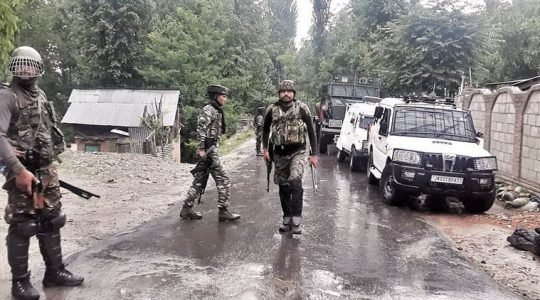
Al Qaeda’s plans to focus on Jammu and Kashmir
On expected lines, Al Qaeda appears to be preparing to focus on J&K post US-Taliban agreement. There are three indications for this. First, the latest edition of Nawai Afghan Jihad, the online publication of Al-Qaeda in the Indian Subcontinent (AQIS), disclosed its plans to rename the magazine as “Nawai Ghazwa-e-Hind”. Second, the latest edition of the magazine also claimed that the US-Taliban deal was a “magnificent victory” suggesting that the most powerful country had to bow before the Islamic jihadist group.
The focus on this deal was deliberate to suggest that the Al Qaeda had also contributed to put pressure on the US. Third, the magazine also carried an article titled “Kandahar to Doda: The season of hopes”, purportedly written by a Kashmiri, that mentioned of Al Qaeda in the Indian Sub-continent’s plans to focus on J&K and importantly made tacit references to the removal of Article 370.
The explanation given to change the name of the magazine appears to be crucial. This is linked to the outfit’s efforts aimed at propagation of its ideology in India and to wage jihad for the “suppressed Muslims” particularly in J&K.
The magazine mentioned the need for ‘Islamic Emirate of Afghanistan’ for success of jihad in the sub-continent. The article entitled “Kandahar to Doda” not only mentioned the alleged atrocities post removal of Article 370, but highlighted the killings of terrorists like Zakir Musa, the founder of an Indian chapter of Al-Qaeda called Ansar Ghazwat-ul-Hind, who was killed by security forces in Tral area of south Kashmir in May 2019.
This not the first time that Al Qaeda has indicated its objective of waging jihad in J&K. In 1996, Osama bin Laden had indicated his group’s intention of launching jihad in India. In 2002, the report of creation a separate wing of AL Qaeda for J&K surfaced. In September 2014, the Al Qaeda in the Indian Sub-continent was formed with the objective of bringing jihad to the sub-continent to ‘free the occupied land of Muslims’, according to the Al Qaeda’s English language magazine Resurgence.
While some experts have pointed out that this group has so far not been able to do anything significant in J&K or Assam as it lacked capabilities, there are new factors which need to be kept in view to assess its increased capabilities. First, there are strong linkages with ISI and LeT.
Media reports had indicated the case of Abdur Rehman of this group who had received $20,000 form LeT. There are a few cells of this group in Pakistan which are soliciting donations form businessmen under the guise of support of Islamic charities. Hence funds are not a problem for AQIS. Second, there is a greater emphasis on radicalisation of Muslim youth in India.
AQIS’s online propaganda, through videos and PDF magazines, plays a large role in recruiting South Asian Muslims to the jihad on the subcontinent. Al-Qaeda’s As-Sahab media arm has produced videos of speeches appealing to young Muslims in India, specifically in Bihar, Gujarat, Delhi, Uttar Pradesh, and South India. In August 2016, AQIS began translating its propaganda into Tamil and Malayalam in an attempt to reach South Indian Muslims. Third, the outfit claims that it has been able to overcome difficulties to regroup and mobilise.
Prudence demands that in view of the prevailing conditions in J&K and elsewhere, the threat from the AQIS should not be taken lightly. Its pernicious propaganda may be able to have wider impact now. The need for an effective counter strategy to deal with the AQIS’s propaganda can hardly be underestimated.
Source: India Times





